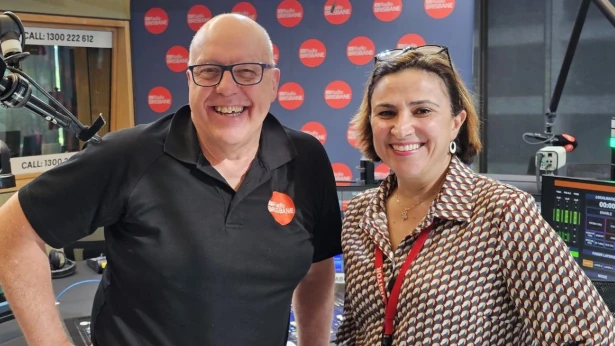Natgen exists to provide our clients with well-considered, risk-managed investment opportunities and quality strategic advice. We base our decision-making, advice and investment offers on careful measurement and analysis, and combine this with our management experience to arrive at quality solutions.
1,000+ followers
Peta brings over 25 years’ financial service experience gained in funds management, and wealth management. As a top performing fund manager, Peta managed institutional cash and fixed income portfolios (in excess of $5b) for Suncorp Investments, and as an Executive Leader, led ASX listed Cromwell Property Group’s Retail Funds Management business. At Natgen, Peta provides our funds management business with further depth and leads the development of new Natgen investments for the
benefit of our Unitholders.
Steve has had a varied career at the ABC from researcher for 7.30 Report to producing Stateline, as well as ABC Radio news and presenting the Queensland Statewide Evenings radio program.
Steve’s love of Brisbane and passion for fighting the good fight ensures lively and informative conversation every morning on ABC Brisbane.
But the Reserve Bank Governor, as you’ve heard, says it was a consensus decision by the Reserve Bank to cut the interest rates.
The banks of Australia rapidly followed suit.
It’s the second cut this year.
Australia’s Treasurer Jim Chalmers says it reflects the substantial progress in the fight against inflation.
But as you’ll hear, it also means that there’s going to be further pressure on an already-inflated housing market.
Peta Tilse is Head of Funds Management at NatGen.
I asked her, first of all, today, her reaction to the rate cut decision.
Morning, Steve.
So, as expected, markets had fully priced in a 25 basis point interest rate cut.
So that brought the cash rate down from 4.1% down to 3.8%.
So what it means for an everyday borrower on, say, a $500,000 loan, that’s about $80 a month of saving.
So it’s not, you know, castles or things like that, but, you know, $80 in your pockets better than the banks.
Now, what was interesting out of yesterday is they’ve turned what’s called dovish,
instead of being hawkish, where they stomp on anything that looks like inflation, which means they increase interest rates.
They’ve turned dovish, which means, okay, we’ll let things kind of fly.
So essentially, we had data at the end of last month’s CPI data or inflation data,
which showed the inflation rate come down to 2.4%.
And the trimmed mean, which is the preferred measure that the RBA uses.
There it is. That’s what you all talk about at the pubs.
That’s the one. That’s the one.
Yep, yep.
So the trimmed mean, which basically looks at the middle chunk of things in the survey,
that’s under 3%. So remember, the reserve bank’s always looking at that sort of 2% to 3% band.
Yep.
And so now we’re just under, just.
Now, interesting things out of the CPI was one of the biggest contributors to it was housing.
And within the housing part of that electricity contributed 16.3%, like had a 16.3% rise, but, you know.
So the price of electricity is going up massively still.
Massively. And especially for Brisbaneites, because if you recall, we previously had the $1,000 Queensland Government rebate.
And so basically that got washed out of last quarter’s data.
Yep.
I mean, I can vouch for that. I mean, my electricity bill is nasty and it’s $1,800 a quarter.
So I’ve got to work at my sons and their air conditioning use.
Good luck.
Yeah. Anyway, the other things though that that’s going well for the economy at the moment is still we’ve got unemployment.
Well, it’s good for us in general because we’re employed.
So 4.1%. But that means there’s not a lot of give if things accelerate.
And growth is still sort of a bit over 2%, which is which is good.
My guest is Peta Tilce, Head of Funds Management at NatGen.
This is ABC Radio Brisbane. Steve Austin is my name.
I want to ask you about housing.
I still think this is the major issue for Australians.
Interestingly, Ray White’s Chief Economist, Narita Konsebi has pointed out that the combination of interest rate cuts, the re-elected federal government’s policies to, you know, have a 5% deposit scheme,
you know, lower mortgage insurance situation and global economic uncertainty creates a what she says is a perfect environment for accelerated price growth across Australia’s property markets.
In other words, this all puts increased pressure on the housing market.
How can it not put forced prices up already massively overinflated even further?
Yes.
So let’s go back to basic economics. What affects price?
It’s your various supply and demand dynamics, right?
So and also there’s kind of like other things like, for instance, with if you if you go to borrow money to buy a house, APRA, which is the is the other potential sort of regulator for banks.
So this is just to make sure banks just don’t go out there and land willingly and get us into a whole heap, get people into a whole heap of trouble.
So they’ve got this thing called a line serviceability buffer, essentially.
So basically, irrespective of what that variable rate looks like, like, you know, say at 6%.
And basically they get the lender to add 3% to that.
So now we’re looking at a lending rate of 9%.
And they and if you can meet the grade for that, you’ll get the loan.
And mind you, after this race, recent cut, the best I could see at the minute was about 5.49%.
But anyway, so we’re still talking about 8.5% to 9%, right?
So that’s a lot of money to prove you can serve us.
So that’s just one thing.
So that’s going to hamper things.
But, you know, as interest rates come lower, that test will mean more people can actually apply to get a loan, etc.
So again, that’s sort of increasing the demand side of things.
Secondly, when we look at property and look, I look at it from a commercial property perspective, because that’s what we do at NAC Gen.
But it’s the same with residential.
It’s about population growth.
And for instance, in Australia, our population is growing about 2%.
In the southeast Queensland corner, we’re 2.3%.
That’s massively high by global standards.
Massively high.
Correct.
And even on the Queensland government’s own kind of trackings, like we’ve got a population of about 3.8 million people in the southeast Queensland corner.
And they’ve got this regional plan that goes out to 2046 and they’re expecting it to get to 6 million people.
So we need to find another 900,000 new homes to house all these people.
And don’t forget, we’ve got net overseas migration.
So that’s a combination of temporary people that are that might be students coming to land English and whatnot versus, you know, the people that are moving here to actually work on mines or wherever they’re going.
So when you’re looking at those kind of demand characteristics, it’s really strong.
Yet, is supply actually keeping up with that?
No, supply is slowing down.
Correct.
And the federal government’s increasing demand.
Correct.
And not tinkering with the things that they can tinker, which is, which literally is, you know, maybe we don’t bring in so many students, for instance, on those visas and sort of let a bit of absorption occur and the economy sort of settle a bit.
But, you know, that’s government policy and they have to figure those things out.
It all comes down to supply and demand and what price we have to pay for things.
And don’t forget, we have got, Brisbane has got an incredible next few years of infrastructure spend coming with obviously with the Olympics, but it’s all the other things like, you know, the Kumara connector, the Kumara hospital, you know, the various upgrades to other hospitals, the Cross River Rail, etc.
Like there’s so much infrastructure being built at the moment that there’s high demand for labour, which means you’re paying more for tradies.
But can you afford to pay them to build you a new house?
Probably not.
You know, so it’s, it’s, we’re coming up to a difficult period in my opinion.
I’ll talk to you again about this.
Peta Tilse, thank you very much for your time.
Pleasure, Steve.
Peta Tilse is head of funds management at Natgen.

















Natgen stores up its next win Fund manager Natgen has closed its third capital placement...
Rates on Hold and Watching Inflation A helping hand in commercial and property investment and...
Breaking Down The Reserve Banks’ Decision A helping hand in commercial and property investment and...
Breaking Down The Reserve Banks’ Decision A helping hand in commercial and property investment and...





1,200+ followers